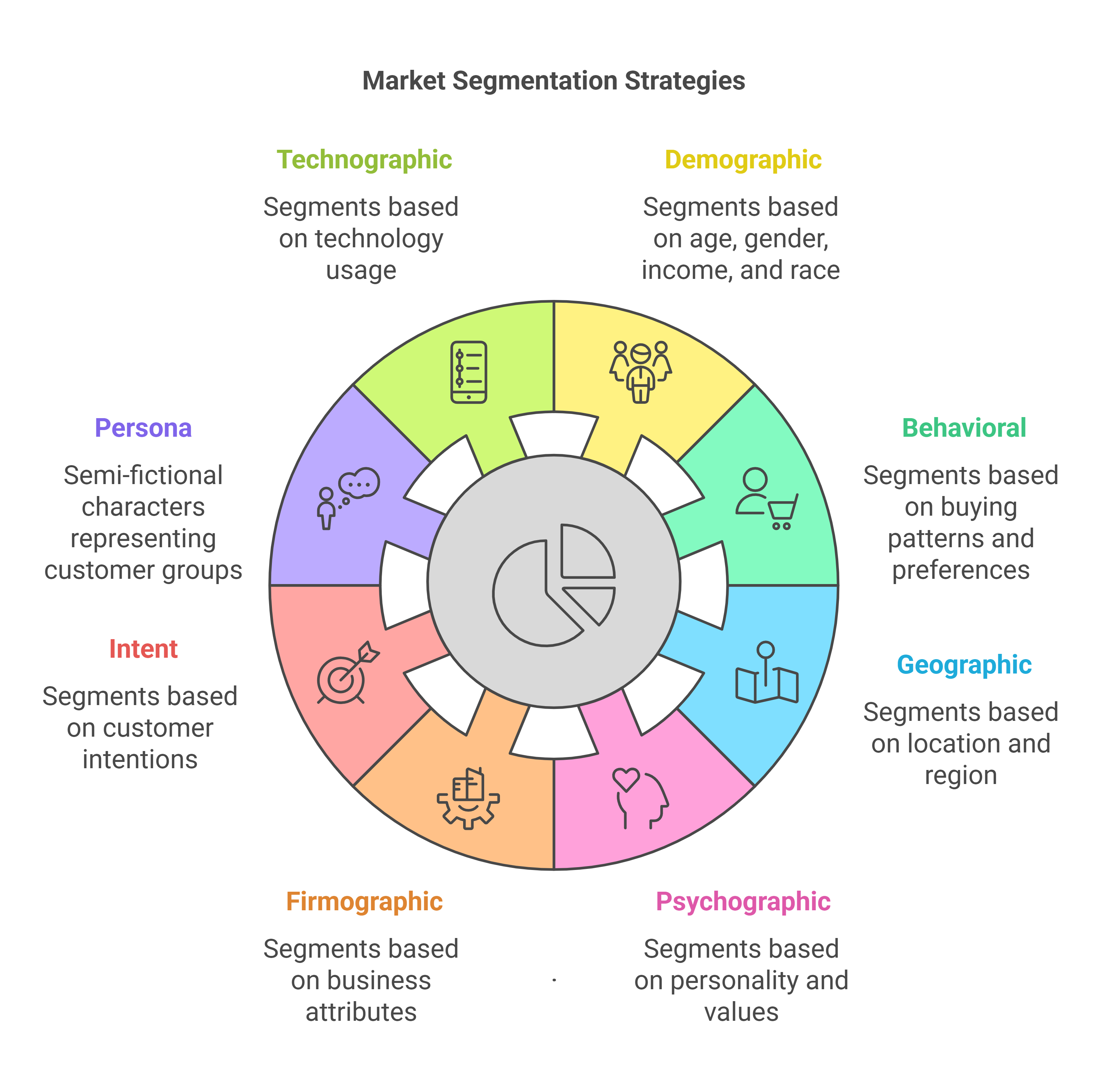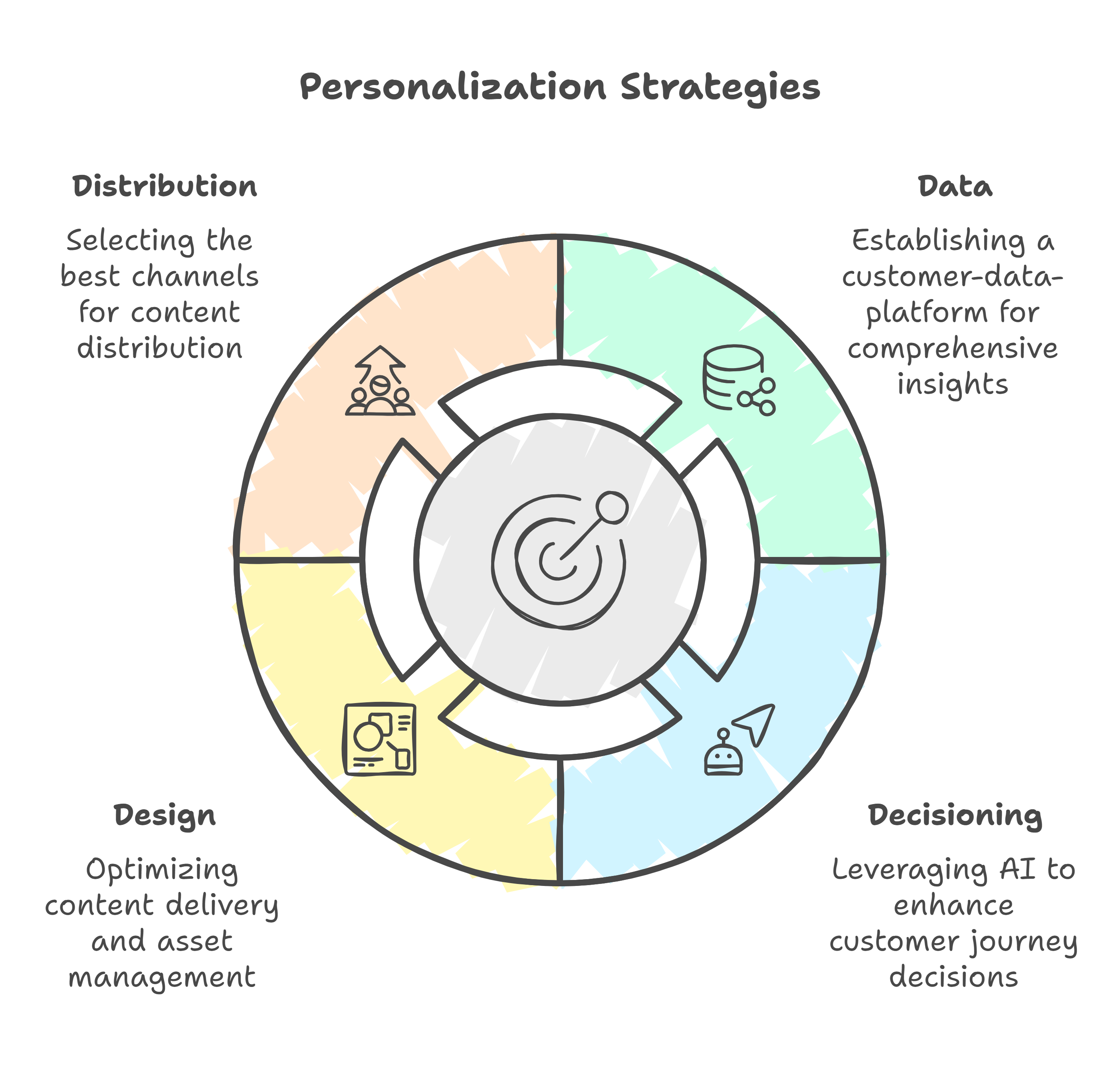Customer Segmentation & Targeting: Creating Tailored Marketing Experiences
Customer Segmentation Strategies
Defining Market Segmentation Strategy
- What it is: A market segmentation strategy is the process of dividing a broad consumer or business market into sub-groups of consumers (known as segments) based on shared characteristics.
- Goal: The main objective is to design marketing campaigns by targeting each customer segment with tailored messaging.
How Segmentation Helps
A good segmentation strategy does a few key things:
-
Tailored Marketing Campaigns: Creates marketing campaigns by creating highly specific and effective communications tailored to each audience segment based on various methods of segmentation.
- Real-life Example: A clothing store running different ads on social media for teenagers.
- Target the needs of various different markets so as to meet the demands of every customer.*
Best Practices and Examples for Effective Segmentation
-
Conduct Market Research:
- Businesses need to conduct market research to understand the needs of the audience. *This includes the use of surveys, focus groups and research methods
-
Identify Market Segments:
- Involves recognizing the most profitable and responsive customer segments and can also help to anlyze customer data to create buyer personas.
-
Develop a Marketing Plan:
- It can target each segment with the specific marketing messages and campaigns for channels that are likely to work for each group
-
Measure results:
- Allows tracking sales, monitoring customer feedback, and using marketing metrics for proper assessment
Real-life Example:
- The cosmetic and personal care company segment based on age, and gender as opposed to wealth, and location.
- A grocery store divides its customers based on if they are students or not, so as to provide tailored offers to students.
Types of Market Segmentation
Knowing each segmentation strategy will enhance a marketer's ability to better target their audience with the right messages and actions.
- Demographic Segmentation: Divides market based on demographics, including gender, income, and race.
-
Behavioral Segmentation: Categorizes customers based on their buying patterns, what benefits they are seeking etc
- A customer with low purchase volume receives a sales email for another product
-
Geographic Segmentation: Segmenting based on location that include country, region, state, city and town etc.
- A grocery chain targeting people in the East cost are not as likely to receive advertisements for stores in the West cost
-
Psychographic Segmentation: Divides buyers into different segments based on their personality characteristics and is closely related to values.
- Customers who values family and community are more likely to receive advertising.
-
Firmographic Segmentation: Segmenting by business to business attributes such as size, revenue, industry etc
- A company that offers cloud based services to small businesses would likely advertise to small companies.
- Intent Segmentation: Segmenting based on customer's intention. * A customer who abandons his cart will receive advertisements regarding that transaction so as to prompt him to buy.
- Persona Segmentation: A semi-fictional character that represents a group of people to find the best ways to market it to them based on data
-
Technographic Segmentation: Grouping customers based on the type of technology they use.
- Consumers who use a variety of social media apps may respond well to influencer campaigns as opposed to older customers who consume the newspaper.
- Digital Marketing Segmentation: Customers who use digital marketing as opposed to the types of methods outlined above, that focus on segmentation through a traditional setting.
Other Types of Segmentation
Segmentation can also use other categories of information to find the most relevant groups
- Generational segmentation: This groups customer based on the generation, such as Silent Generation, Millenials, and Generation Z.
- Value Segmentation: This separates customers based on the quantity they're likely to spend.
- Lifestage Segmentation: This groups people based on milestones in their life, like having a baby or buying a home.
-
Seasonal Segmentation: Divides customers based on behaviors during specific seasons or times of year.

Personalization and Targeting
Defining Personalized Marketing
Personalized marketing is a strategy that uses data to deliver tailored marketing messages and offers to individual customers. It goes beyond basic segmentation to create one-to-one interactions.
- Tailoring Messages: Messages are made relevant and engaging for individual customers.
How to Target with the Right Messages
-
Data Driven Implement marketing and advertising that is specifically targeting those individuals
- Real-Life Example: Amazon recommends you products to buy because of other products that you have bought.
- Optimized Experience: Ensure you deliver an enjoyable journey for customer
The 4Ds That Drive Personalization
The '4Ds' is a framework to help ensure the customers are treated on a personal level.
- Data: Create a customer-data-platform to get a 360-view of customers.
- Decisioning: This can assist in using artificial intelligence to decide the customer journey.
- Design: Use data to optimize the content delivery and the customer journey as well as improve the asset management.
-
Distribution: Use the most appropriate means of distribution.

Trends in Personalized Marketing
Here are some areas to consider:
- Personalized Emails:
- Add personalized content so as to improve open rates.
- Generic Marketing
- Advertising shouldn't use generic terms or be too broad.
- This can create a higher customer connection.
-
Personal Product Recommendations:
- Product recommendations allow customers to purchase based on previous interactions.
- This allows for a specific and highly targeted reach of consumers so as to promote the products they are interested in.
Segmentation Using Personas
To better understand your customers, it can be useful to segment via personas. Personas allow you to break down their behaviors and personalities, such as: • Intent Based Segmentation: Based on who is likely and unlikely to convert to customers • Fictional Persona Create fictional or imagined characters
The Importance of Using Online Channels to Examine Customer Preferences
It is important to collect customer data to make sure their information is used for the proper channels to help improve marketing effectiveness
This creates a proper outline for how it is vital to segment and personalize.

No Comments